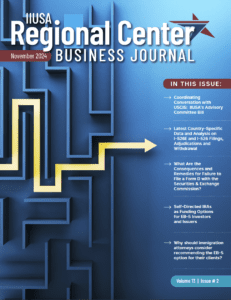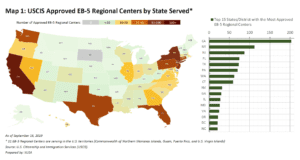On October 11, 2023, USCIS published a policy guidance memo (the “Guidance”) about the required investment timeframe for EB-5 investors who file their Form I-526, or Form I-526E, on or after the enactment of the 2023 EB-5 Reform and Integrity Act (the “RIA”). Specifically, the Guidance articulates that post-RIA EB-5 investors “no longer need to sustain their investment throughout their conditional residence” and now only requires the EB-5 investment to be held for “at least two years.”
The Guidance raised critical questions that necessitate greater clarity. However, without a clear understanding of the realities and actual statistics surrounding the deployment of EB-5 investments, policy discussions on this important topic lack a solid foundation. USCIS has yet to publish any data on the sustainment period of EB-5 funds. Therefore, IIUSA surveyed our regional center members and gathered data on the average investment timeframe for their (pre-RIA) completed EB-5 projects and successfully created sufficient jobs for their investors.
IIUSA received data on 171 EB-5 projects completed between 2014 and 2023, covering the 10-year period before the enactment of the RIA. Of these projects, 166 were in high unemployment areas, while 5 were in rural areas. Our analysis found that, on average, the sustainment period for an investor’s EB-5 investment in these projects was 5.5 years. Furthermore, based on our data sample, projects in rural areas prior to the RIA had a slightly longer holding period for EB-5 investments, averaging 5.6 years. Our findings are summarized below:
IIUSA has been diligently collecting data from the EB-5 industry to enrich policy discussions and highlight the current trends within the EB-5 Program. To delve deeper into our data collection initiatives or to contribute to our ongoing efforts, reach out to IIUSA today at research@iiusa.org.








